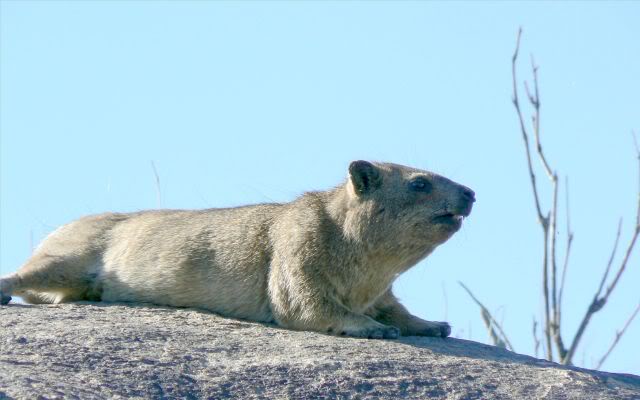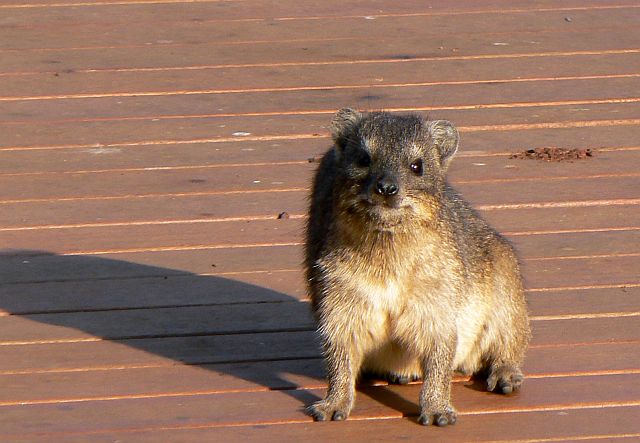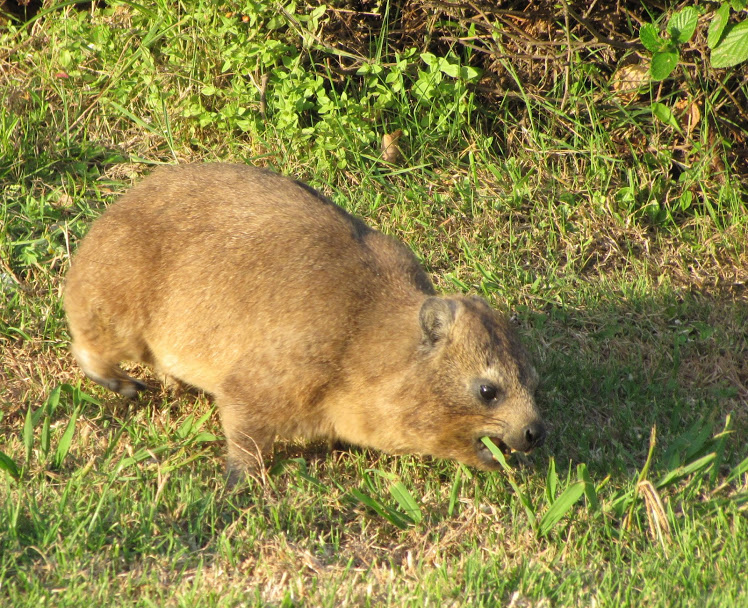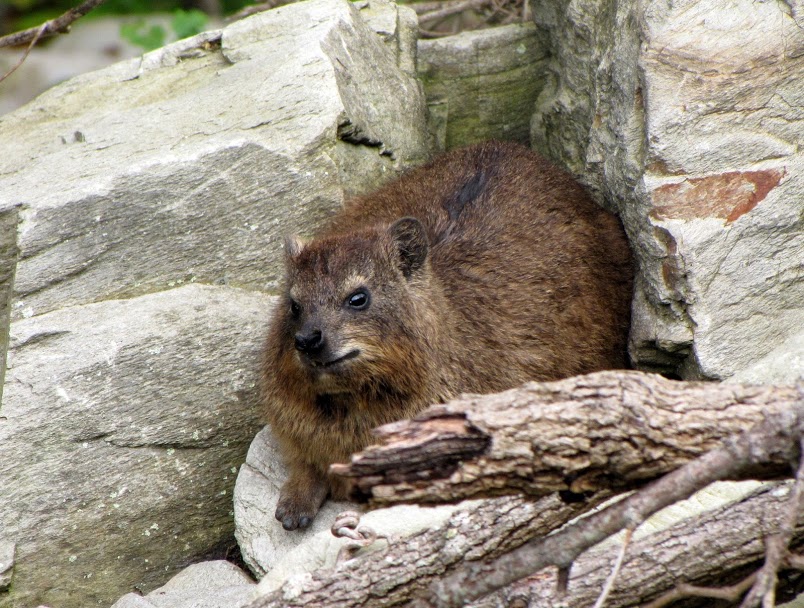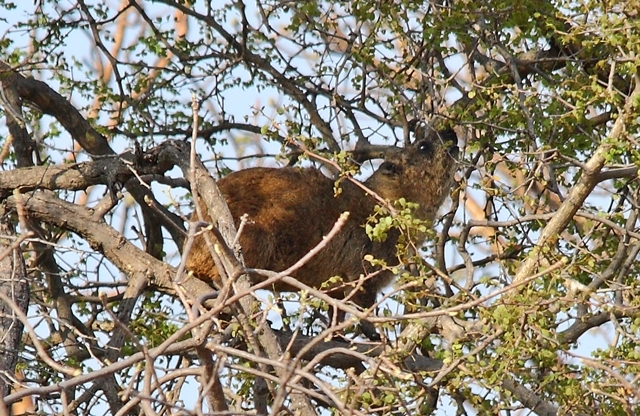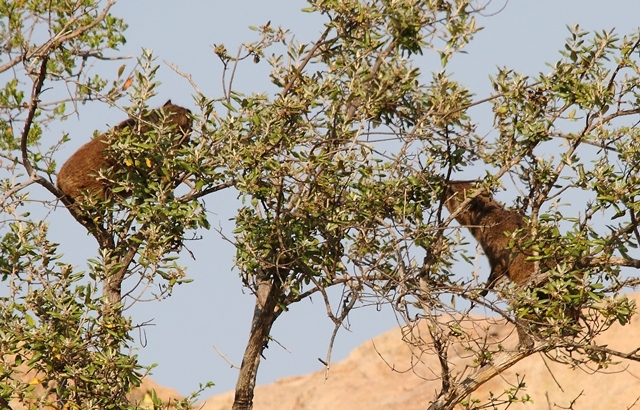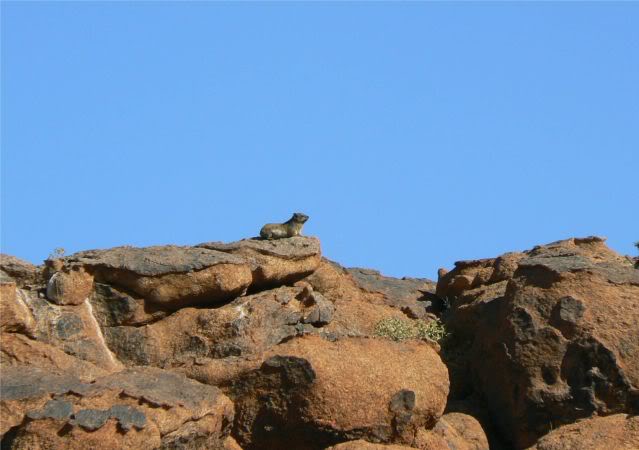
Field signs at Augrabies: Urine desposits
Dassies have minimal water requirements and can get their water from the vegetation in their diet or from pools in the rocks. In addition, they can concentrate urea and electrolytes and excrete large amounts of undissolved calcium carbonate. Dassies have latrines, where they deposit their droppings and urine at a fixed site. The crystallized calcium carbonate forms white deposits on the rock surfaces. These crystals, known as “dassie piss” were believed to have medicinal properties and were used by indigenous tribes and Europeans.
Scent plays an important role in the Hyraxes social structure. Hyraxes have a unique feature; scent glands which is a large dorsal gland located in a bare spot, 25-75 mm long, and surrounded by an oval of erectile hair. It is conspicuous when fanned open, and secretes an aromatic fluid. In most species the oval has different coloured hair patches. This dorsal gland and erectile hair play a central role in hyrax social and reproductive behaviour. The dorsal spot opens when the hyrax is at all excited, from slightly, to fully depending on the stimulus. Both identity and status are signalled by scent. Young hyraxes often climb up on their mother’s back. The scent from the gland on the mother’s back then sticks to the young. The scent helps the mother to identify her young. The mother has 6 nipples, two of which are on her shoulders.
The Rock Hyrax defecate and urinate in latrines, and use the same latrine from one generation to the next. These latrines appear to be of two types: Urine is dribbled down very exposed, outward-facing rocks where calcium carbonate dissolve and are deposited as a very conspicuous white or light coloured streaks.
These appear to serve as external olfactory and visual markers for specific colonies. The second type of latrine is situated in more shaded, protected sites. Both dung and urine are dropped in the same place, preferably on a flat or nearly flat surface. Both gut and kidneys of the Hyraxes are highly efficient at extracting nutrients and saving water. Urine is copious and dilute in the wet season but very concentrated and syrupy in the dry season. Here liquids and solids congeal slowly. These latrines seem to function as scenting parlours where all members of the group to share a common smell that scents their feet and fur.
In these latrines the deposits gradually turn into a black resinous aromatic material in which plant material, pollen and other digestive remains are trapped. These middens fossilize with time in the dry arid regions of South Africa, and become metres thick. Under local conditions, which exclude microbial decomposition and oxidation, urine cements together faecal pellets and other inclusions. It is this fossilized black resinous aromatic material that is known as hyraceum.The dassies are prey to many predators so their latrines are in very sheltered places conducive to the preservation of the middens. Seven middens from a single rock shelter on the north-eastern side of the Cederberg mountain range, Cape Province, were dated by 15 radiocarbon age determinations to between about 19,700 and 1370 yr BP. It is estimated that some of the middens dates back to 40 000 years.
Although Hyraceum only hit the headlines in recent years, it has been used in traditional folk medicine for centuries. In South Africa Hyraceum is traditionally known as “Dassiepis” as well as “klipsweet”. Most perfumers call it African Stone. The Khoisan called it the Master of Masters because of its great healing qualities. Hyraceum, dissolved in alcohol and is used in perfumes.



